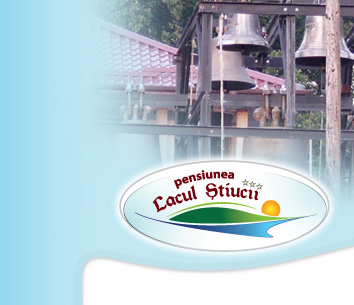1st of March
25.02-03.03.2013
The well known little cord twined from shiny white and red strings, representing the symbol of spring, of wealth and luck is indispensable for this holiday. It is offered to girls and women as of the 1st of March.
The meaning of red and white colors or the way the cord is worn has shared many different interpretations along the years or areas. Red represented the color of fire, of blood, of spring and it also prevented the person from spells or was attributed to life, i.e. to feminism. White represented the purity of water, the whiteness of clouds, of snow, of winter and also specified male wisdom. Thus the cord signified the intertwining of the two sexes, the incessant movement of matter and the continuity of life after death.
The name Mărțișor is the diminutive of marț, the old folk name for March [3] (Martie, in modern Romanian), and thus literally means "little March". The holiday of the Mărțișor is 8000 years old as attested by archeological discoveries, has known a rich past of customs originating in agrarian practices and beliefs.
In the old times, the Mărțișor was given to children and young ones on the 1st of March before sunrise both to girls and boys. The cord was intertwined from white and red or white and black wool strings, the color black representing the unity of the opposites such as summer – winter, warm – cold, fertility – barrenness, light – dark. The cord was worn either on the chest or around the wrist. River stones painted white and red, gold or silver coins, buds or flowers were hung on it. It was worn from the 1st of March until the first signs of spring started to show such as the first song of the cuckoo, cherry blossom, and the arrival of storks or of swallows. Then the Mărțișor was tied either to a rose stem or to a tree in blossom, to the branches of a sour cherry tree, a cherry tree, to flowering maize or cranberry so that the yields be plenty, or to bring luck or it was just thrown in the direction of the arrival of migrating birds hollering out loud: “Take away the bad and give me the good!” The belief was that the Mărțișor will be uplifted to the sun by the birds bringing luck to the person that placed it on the tree. Then the coins were used to purchase cheese and red wine so that all summer long girls’ faces should be light and happy. The first sheep entering the fold were decorated with red and white and also the first plow in the fields.
In time to this cord a silver coin was added. The coin was associated with the Sun. Thus the Mărțișor becomes the symbol of fire and light, that is that of the Sun.
For the Geto-Dacian people the year began on the 1st of March. So March was the first month of the year. Their calendar had two seasons: summer and winter. The Mărțișor for them was equal to a talisman that was meant to bring luck to the bearer offered by the new year together with wishes of well and health, love and happiness.
Some folk legends say that the Mărțișor was spun by Baba Dochia while ascending the mountain with the sheep.
Today the value of the Mărțișor is as much the artistic creation it bears. It is being made of anything and could any significance could be attached to it. The cord is attached to little gifts, decorative objects like flowers, plush toys or the representative snowdrop. In many cases these objects transmit a message or lend significance to the gesture. The offering of the Mărțișor to a female is a happy moment.
